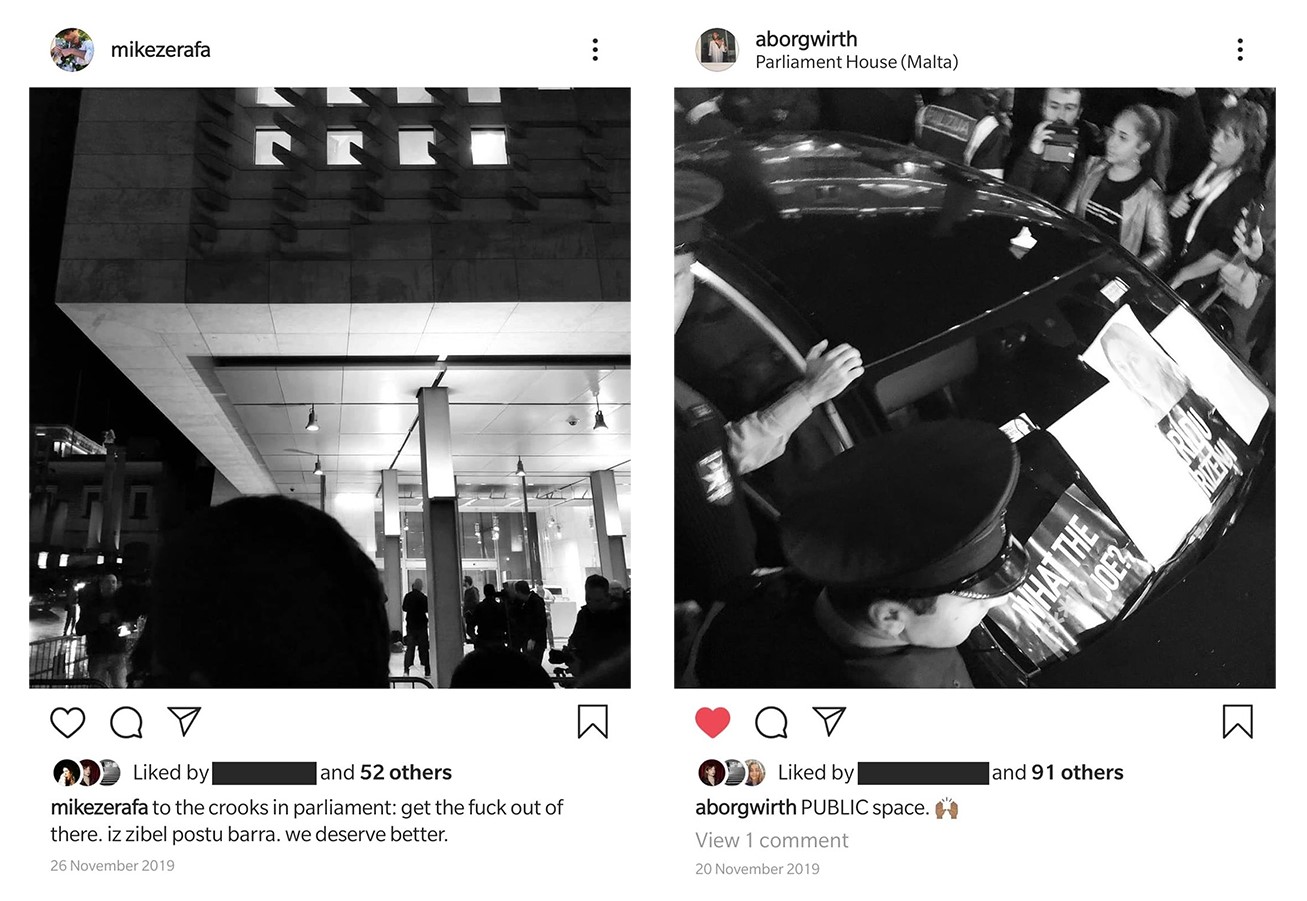

Andrew Borg Wirth
Masters Graduate
University of Malta
Michael Zerafa
Architecture Graduate
University of Malta
The last two months of 2019 saw great political turmoil in Malta as a suspect in the Daphne Caruana Galizia assasination was identified and connected to members in the highest position of the Maltese Government. As from the day the public found out about the suspect, November 21st, protests were organised in Valletta everyday, in front of Parliament, the Office of the Prime Minister and the makeshift memorial which was put together for the late journalist, calling for accountability and demanding resignations from anyone who is implicit.
All three protest spaces meant different things to the protestors, with the parliament square being the most popular because of the direct agency it gives protestors to make parliamentarians listen whilst a session is going on. Recently designed by Renzo Piano, the ground floor area of the building was intended to be fully transparent and accessible by the public: politicians would share the same entrance with anyone else. The configuration and materiality of the ground floor used by the architect was a symbol for an open and fair democracy, giving people the opportunity to stop politicians on the way in and out of parliament – a gesture meant to portray the sort of accountability which politicians should have to the people they serve.
As time passed and revelations about the assasination grew, so did the crowds that would congregate – progressively bigger, undeniably louder and tangibly more disobedient. Police presence increased and layers of barricades were added between protestors and parliament from week to week. By December 2nd, the 25m wide parliament square was closed off with barricades, with a significantly increased number of police behind them. Only a narrow corridor opposite parliament left for public use. The protestors were enraged.
People knew that parliament was in session; they understood that denying access to one of the largest squares in the capital didn’t bode well; they were infuriated by politicians not facing them, escaping from back entrances and vanishing in fleets of black cars.
One night, and quite spontaneously, the crowd took matters into its own hands: the politicians tried to lock them out of their public space, so they locked the politicians inside parliament.
In a collective effort, the public gathered in front of the main entrance to the parliament, spreading to the different exits of the buildings which led to other squares, streets and the city’s ditch. All televisions in the country showed one incredibly weird scene: politicians stuck in a glass box, surrounded by a cage of barricades which they built for themselves and locked by the people they wanted to keep out. It was a spectacle of power, a direct expression of collective anger and a display of one of Piano’s best design decisions: to unravel the veil that transparently hangs between public and private life. His was a decision to expose and seek clarity.
The ‘Malta’ this Parliament Building had been planned (and built, inaugurated and launched) in isn’t the same one it is today – in many ways, because of it.